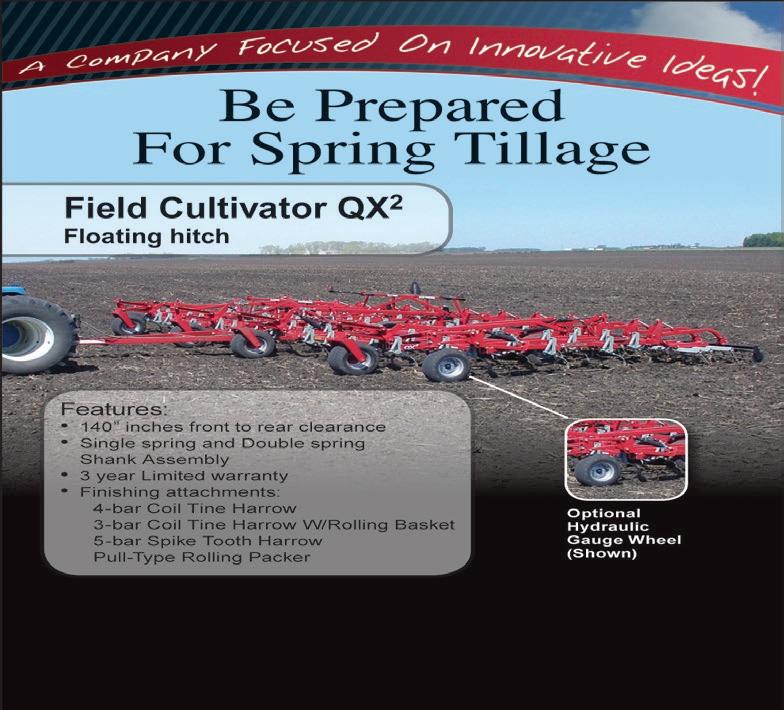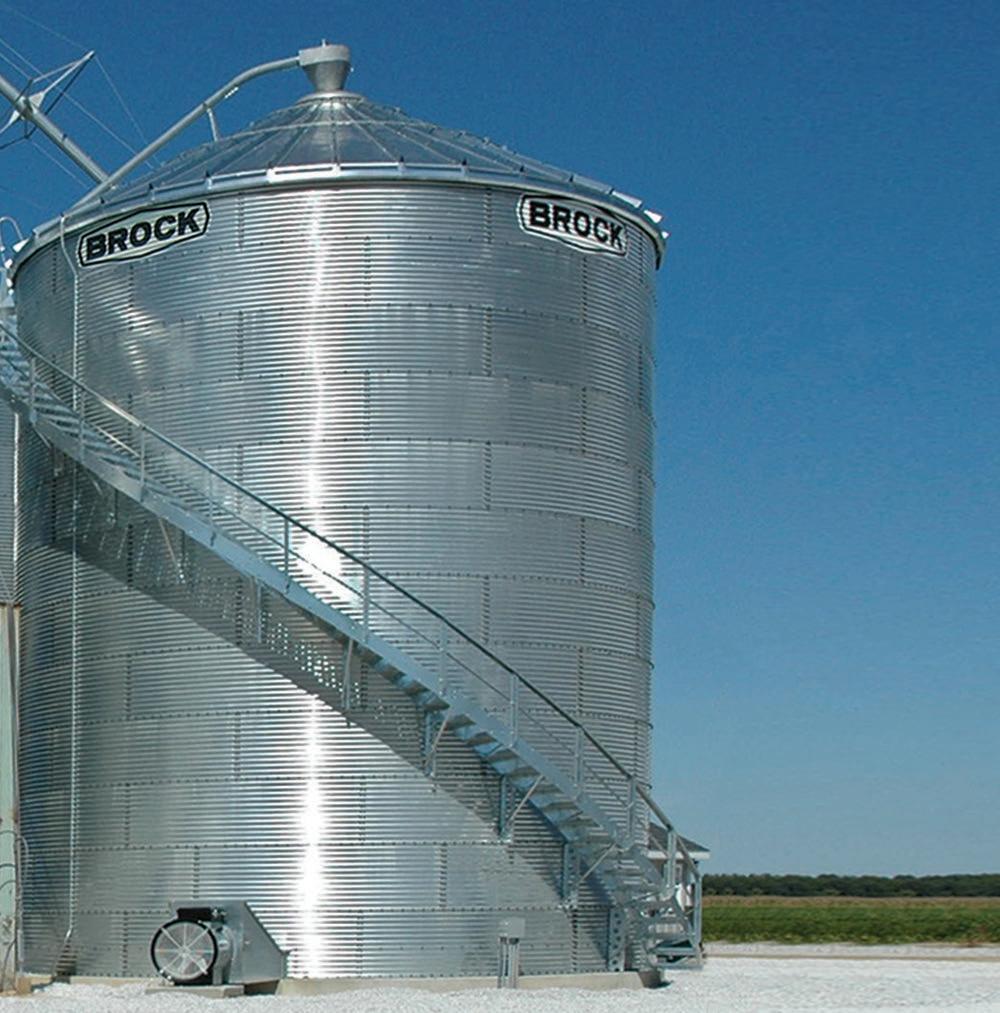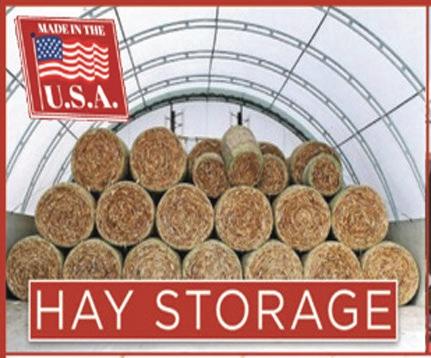

Spring Planning




By DARCY DOUGHERTY
AMES — What’s the main crop or food product that people associate with Florida?
Orange juice?
“Much of Florida’s culture and economy have been shaped around orange production for generations,” said Dr. Jonathan Lundgren, a South Dakota farmer, scientist and beekeeper who spoke to 100-plus students, professors and members of the public during the 2025 Shivvers Memorial Lecture at Iowa State University in February. “But all that has changed in the last 20 years — and it’s not good.”
Why should Iowa farmers care about Florida’s citrus woes?
These trends reflect some ag realities that go far beyond the citrus groves, right into the heart of the Corn Belt.
Florida’s citrus industry has suffered a staggering 90% decline in production during the past two decades, according to a report from Florida TaxWatch. Much of this dramatic decline is due to citrus greening disease, which has infected nearly 100% of Florida’s commercial groves. Once trees are infected with this bacterial disease, most die within a few years.
While citrus growers have been spraying various chemicals to try to save their trees, the products haven’t stopped the destruction. Conventional ag practices just aren’t cutting it, Lundgren said. “It’s time to ask, ‘How’s this working for you?’”
The Florida citrus crisis points to a larger issue that’s common throughout modern agriculture. “Disease is always just a symptom,” said Lundgren, who received his doctorate in entomology from the University of Illinois in 2004. “Our farm management practices are driving some of these challenges.”
The central problem is that agriculture has become far too “simplified,” Lundgren said. “The prairies that used to cover much of Iowa were incredibly complex ecosystems. Through the years, agriculture has evolved to replace what the natural habitat used to do on its own with products in a jug,” said Lundgren, referring to the array of crop input products to control insect pests, weeds and disease.
This dependency on crop input products creates a new set of challenges.
“It’s an addiction, and farmers are terribly addicted right now,” Lundgren said.
Maximizing the PROMISE of regenerative ag
Lundgren shares lessons learned from 1,000 farms

Understanding Unintended ConseqUenCes
Since 1969, the Shivvers Memorial Lecture Series has brought distinguished speakers like Lundgren to ISU to speak about the ways agriculture can sustain, rather than destroy, natural resources. This lecture series also explores agriculture’s responsibility to both the land and the farmer, and its interdependence in the web of life.
These concepts are reflected in a groundbreaking study conducted by scientists in South Dakota, including Lundgren, who found that the world’s most widely-used family of pesticides is likely causing serious birth defects in wildlife. This report, which made news headlines in 2019, keyed in on neonicotinoids, a group of synthetic insecticides that are used widely on farms and can be highly toxic to bees and other pollinators.
“About 75% of the land in Iowa is planted with neonicotinoids,” said Lundgren, referring to seed treatments containing the insecticide.
Neonicotinoids don’t always stay put, Lundgren added. They can persist in the environment and be transported by rainfall or runoff, potentially contaminating soil, surface water and groundwater.
The South Dakota research, which examined neonicotinoids’ effects on white-tailed deer, deepened concerns about the chemical’s potential to harm large mammals, including humans. The study showed that white-tailed deer with high levels of neonicotinoid pesticide in their spleens developed defects such as smaller reproductive
organs, pronounced overbites and declined thyroid function. Fawns with elevated levels of the pesticide in their spleens were found to be generally smaller and less healthy than deer with less of the chemical in their organs.
The study marks the first time neonicotinoid pesticide consumption has been linked to birth defects in large mammals.
“These (neonicotinoids) were deemed to be safe for higher organisms, so the fact that we saw so many diverse impacts on white-tailed deer was a big thing,” said Lundgren, who co-authored the study. “The fact that whitetail deer are not that far off from our livestock or even humans suggests that maybe we need to be examining these insecticides’ risks a little bit more closely. Neonicotinoids affect organisms in ways we don’t understand.”
doing sCienCe differently and growing life
Finding these answers is important to Lundgren, who was a leading scientist with the U.S. Department of Agriculture’s Agricultural Research Service (ARS) for a number of years. He became disillusioned, however, and left ARS to become an independent scientist.
“When I was with USDA, even though I was getting lots of grants and was publishing often, I kept coming back to the question, ‘How’s it working?’ Things weren’t getting better in agriculture. Pollution was rampant. Rural communities were declining. We needed to do science differently.”
Today, Lundgren’s research and education programs focus on
assessing the ecological risk of pest management strategies and developing long-term solutions for regenerative food systems.
He’s the CEO of Blue Dasher Farm near Estilline in eastern South Dakota. This research and demonstration farm combines science with hands-on experience to remove barriers to the adoption of regenerative ag practices.
“At Blue Dasher Farm, we believe in a food system that promotes soil health, farm biodiversity and nutrient dense food — all while benefiting the farmers who grow it,” Lundgren said.
Lundgren is also the executive director of Ecdysis Foundation, a nonprofit research organization that’s incorporating science to transform agriculture with regenerative principles. The Ecdysis Foundation spearheads the 1,000 Farms Initiative.
Researchers and farmers have been collecting data to help paint a picture of how specific farming practices (from conventional to regenerative and everything in between) are impacting soil composition, water infiltration rates, microbial life and other factors that impact soil health.
The 1,000 Farms Initiative analyzes a number of key factors to show producers the health of their land, how their land compares with others, and how to incorporate regenerative methods into their agricultural production.
“This is a very hands-on type of science,” Lundgren said. “We need science, but it has to be done right.”
He points to the results he has seen on farms across America that use regenerative
-Submitted
ABOVE: Dr. Jonathan Lundgren, a South Dakota farmer, scientist and beekeeper, spoke to more than 100 students, professors and members of the public during the 2025 Shivvers Memorial Lecture at Iowa State University in February.
LEFT: Dr. Jonathan Lundgren (shown here during his presentation at Iowa State University in February 2025) and his colleagues have found that the world’s most widelyused family of pesticides is likely causing serious birth defects in wildlife. Their research keyed in on neonicotinoids, a group of synthetic insecticides that are used widely on farms and can be highly toxic to bees and other pollinators.
ag practices, including reduced tillage, no-till, cover crops and more grazing animals on the land. “These farmers are doing things that science said couldn’t happen — like building soil faster, and controlling insect pests and weeds in ways that science says wasn’t possible.”
The biodiversity of regenerative ag systems is another plus, offering essential habitat for pollinators, birds and other wildlife. “Farmers are meant to be stewards of life,” Lundgren said. “Regenerative cropland has more life in all its forms.”
The mindset of a regenerative farmer is inspiring, he added. “These growers don’t wake up every day thinking about what they’re going to kill, whether that’s an insect pest, fungus or disease. Growing life is their focus.”
He encourages all farmers to ask two key questions with every management decision they make. Does this increase life? Does it increase biodiversity?
“When growing life becomes our focus, this will help solve many of the challenges we’re facing,” Lundgren said, “from water quality to carbon emissions.” Growing life also contributes to a healthier food supply, Lundgren added. He’s focusing more research into the nutrient density and abundance in food produced with regenerative ag practices.
“To the farmers of Iowa, I’m on your side,” Lundgren emphasized. “There’s a better way. Science shows that regenerative ag works, and you don’t have to lose money going to regenerative ag. Let’s start rebuilding our rural communities.”



































-Farm News photo by Darcy Dougherty Maulsby










































































disease and pathogens as well as to environmental stresses. BioEmpruv contains natural and biodegradable ingredients. No chemicals or residues. BioEmpruv will be your best line of defense against Goss’s Wilt and other bacterial leaf diseases. Curative & very systemic. Much wider application window. Developed by PhD biochemist Dr Awada, Logan, UT. Bio-Empruv * Commercially applied to spuds, sweet and eld corn since 2014. It has increased corn yields from 10-90 Bu/A, depending on application timing and infection rate. Keeps plants green and lling until natural maturity (BL) is reached. Drydown with normal senescent plants let the healthy ears dry faster and earlier than corn and grain from a
down plant.










Spring Planning



By DARCY DOUGHERTY MAULSBY Farm News writer
There was a time when no farmer could fathom working without a plow. That was true when the pioneers pushed west into Iowa. In 1837, plowing took a huge leap forward after John Deere invented the first commercially successful, “selfscouring” steel plow that solved the challenge of sticky prairie soil clinging to traditional castiron plows.
In 2023, however, Deere stopped production of its 3710 moldboard plow — 186 years after Deere’s original invention revolutionized Midwestern farming. While moldboard plows were still common on farms across the country into the 1960s and 1970s, times were changing by the 1980s, as more farmers switched to no-till and various forms of conservation tillage. As time went on, the plow became increasingly obsolete in light of many of today’s agricultural practices.
tremendous, noted the Natural Resources Conservation Service in its “Unlock the Secrets of the Soil” publications.
Healthy, functioning soils can cycle nutrients effectively (that means “free fertilizer” for crops), provide good aeration to promote root growth, reduce runoff and erosion, offer greater resilience to drought, heavy rainfall events and temperature extremes, and improve the farm’s profit potential.

“Only living things can have ‘health,’ so viewing soil as a living, breathing ecosystem reflects a shift in the way we view and manage our nation’s soils,” NRCS said.
The concept of managing soil health shares some similarities with human health, Thies said. “There are basic principles that are essential to human health, like eating right, exercising and getting enough sleep. There are also some basic principles that help keep soil healthy.”
foUr Benefits of HealtHier soils
“There’s still a lot of tillage out there that we can reduce,” said Ethan Thies, a conservation field specialist with Iowa State University Extension. Reduced tillage is one of the keys to improving soil health, noted Thies, who led a conversation about soil health during an Extension meeting in Jefferson this winter. These management practices are becoming even more important in an era of extreme climate events, from derechos to drought. Concern about protecting the soil isn’t a new concept, though.
In 1937, President Franklin D. Roosevelt wrote a letter to every state governor in America, making the case for effective soil management. “The nation that destroys its soil destroys itself,” he said.
This bold claim is still valid 88 years later. Soil isn’t an inert growing medium. It’s home to billions of beneficial bacteria, fungi, earthworms and other organisms that work together to create an intricate, symbiotic ecosystem. When this system is working well, the benefits are
Improving soil health is key to long-term, sustainable agricultural production, according to NRCS, which notes that:
n Healthy soil holds more water and loses less water to runoff and evaporation.
n Organic matter builds as tillage declines and plants and crop residue cover the soil.
(NRCS defines reduced tillage as 40% or more of residue left on the soil, Thies said.) Organic matter holds 18 to 20 times its weight in water and recycles nutrients for plants to use.
n Just 1% of organic matter in the top 6 inches of soil holds approximately 27,000 gallons of water per acre.
n Most farmers can increase their soil organic matter in three to 10 years if they adopt soilhealth practices to achieve this goal.
redUCe tillage, add Cover Crops
Improving soil health starts with four key principles:
1. Minimize soil disturbance. A soil disturbance can take a variety of forms. Physical


disturbances come from tillage or compaction from heavy machinery. Biological disturbances can include overgrazing by animals, which can lead to compaction and a reduction in perennial root systems.
To minimize soil disturbance, use rotational grazing, pasture, no-till, strip-till or other forms of reduced tillage, Thies said. This is a major switch from the advice the U.S. Department of Agriculture shared in 1954 in its educational booklet, “Plowing with Moldboard Plows,” which described various types of plows and attachments, plow adjustments and more.
Plowing didn’t come without a cost to the soil.
“When I was going to school in the late 1950s, the dust was so thick at certain times of the year that the lights needed to come on in the daytime,” said Tom Safley, a Jefferson-area

farmer who attended the soil health meeting. “Also, the dust was so bad sometimes that it cut the young corn off.”
Minimizing disturbance to the soil is important to create a habitat that nurtures the beneficial soil microbes that build healthy soil.
“You wouldn’t want someone knocking down your house every fall and forcing you to rebuild it,” said Thies, referring to fall tillage.
How much impact does tillage really have on the soil? In 2024, University of Nebraska-Lincoln researchers published a study that assessed the impact of longterm tillage and crop rotations on soil’s physical properties, including the characteristics of the pores in the soil.
Soil pores — the spaces between soil particles — are crucial for plant growth. They influence water and air movement in the soil, along with nutrient availability, plus they
provide habitat for beneficial soil microorganisms.
The scientists used the X-ray Computed Tomography (XCT) technique, which is like a “CT scan” of the soil, to study soil pores in various farming systems. The study was conducted near Concord in northeastern Nebraska, just west of Sioux City. The scientists used computer technology to produce a 3D visualization of pore distribution in soil samples at various depths with a variety of tillage systems, including no-till, reduced tillage and conventional tillage. The fields included cornsoybean rotations, as well as continuous corn.
The researchers observed the highest number of macropores (large pores) in the notill samples, due to organic matter accumulation, good soil aggregation and less compaction.
2. Cover the soil. Maximizing soil cover can include a living plant canopy such as a growing crop, cover crops, perennial crops or grassland. It can also mean leaving more crop residue to cover the soil after harvest.
“Maximizing soil cover helps reduce erosion, reduces evaporation, regulates soil temperature and provides food and habitat for soil organisms,” Thies said.
Don’t underestimate the power of raindrops to dislodge soil, he added. Larger raindrops, for example, can fall as fast as 20 miles per hour. “This can dislodge soil particles up to 3 feet,” said Thies, who noted that maximizing soil cover can help curb the soil-eroding power of these raindrops.
3. Maximize the presence of living roots. Continuous, living roots from perennial crops to pasture to cover crops can provide a number of benefits. Living roots in the soil increase water infiltration in the soil, which helps reduce runoff and protects water quality. Living roots also reduce compaction, build beneficial soil aggregates, and provide food and habitat for beneficial soil microbes. Iowa farmers continue to add more cover crops to their acres. Around Black Hawk Lake in Sac County, about 25% of the fields around the lake have cover crops, Thies said.
4. Encourage more biodiversity. To boost soil health, it’s important to increase biodiversity through diversified crop rotations, cover crop mixes and the proper integration of grazing animals onto the landscape.
All these soil health principles can be summarized with two big concepts — protect the soil, and feed the soil. “While we’ve come a long ways with soil health, there’s room for improvement,” Thies said. “I encourage you to pick one soil health management practice to focus on this coming year. Then pick another soil health practice to implement the next year. Keep learning.”

-Farm News photo by Darcy Dougherty Maulsby
-Farm News photo by Darcy Dougherty Maulsby ETHAN THIES, a conservation field specialist with Iowa State University (ISU) Extension, led a discussion about soil health during a recent meeting at the ISU Extension office in Jefferson. Farmers, agribusiness professionals and members of the public attended the meeting.

















































































































































